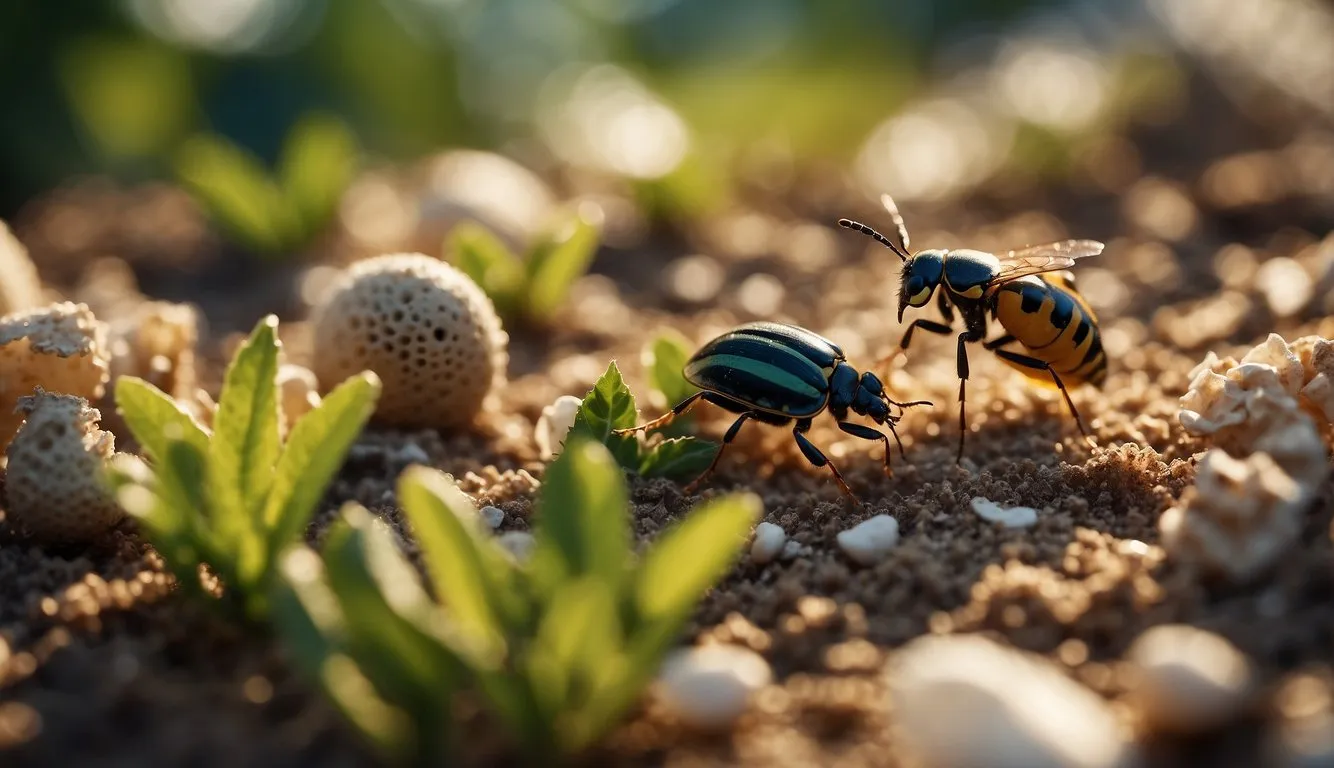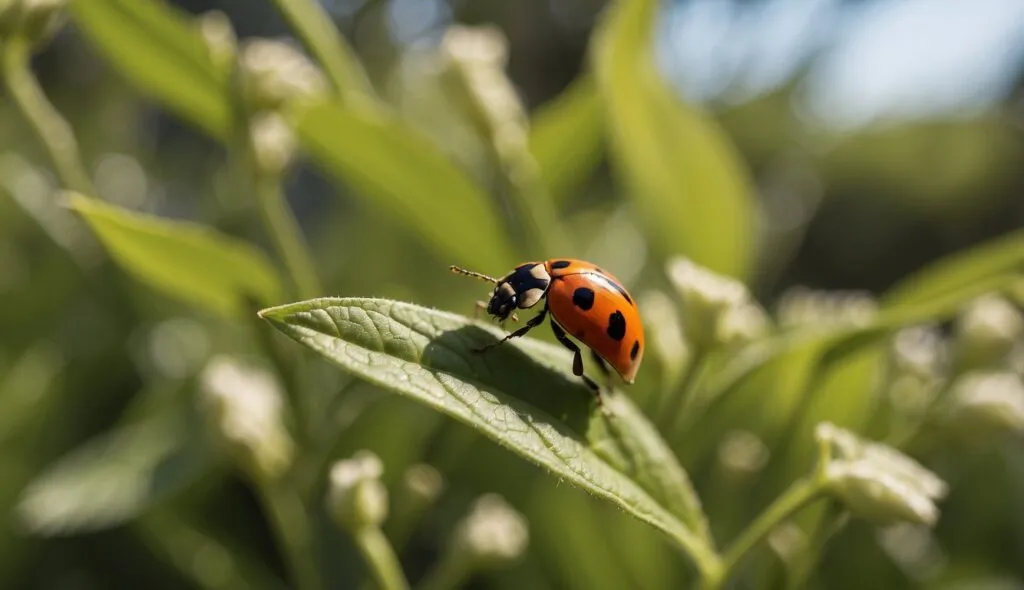As more people become aware of the impact of their actions on the environment, eco-friendly solutions are gaining popularity. One area where this is particularly relevant is in bug prevention. Many traditional pest control methods rely on harmful chemicals that can have negative effects on the environment and human health. In this article, we will explore eco-friendly bug prevention methods that are both effective and safe.

Before we dive into preventative strategies and eco-friendly solutions, it’s important to understand the pests themselves. Different pests require different approaches, and knowing what you’re dealing with can help you choose the most effective solution. Some common household pests include ants, cockroaches, mosquitoes, and rodents. Each of these pests has unique behaviors and habits that can be targeted with specific prevention methods.
Preventing pests from entering your home in the first place is always the best strategy. This can be done by sealing cracks and crevices, keeping your home clean and free of clutter, and properly storing food. Additionally, removing sources of standing water can help prevent mosquitoes from breeding. By taking these preventative measures, you can greatly reduce the likelihood of a pest infestation.
Table of Contents
Key Takeaways
- Understanding the pests you are dealing with is key to effective pest prevention.
- Preventing pests from entering your home in the first place is the best strategy.
- Eco-friendly solutions can be just as effective as traditional pest control methods.
Understanding Pests
As we strive to create a more sustainable and eco-friendly world, it’s important to understand the life cycles and habits of pests to manage them in an eco-friendly way.
Pests are a common issue in households and businesses alike. They can cause damage to property, spread diseases, and be a general nuisance. Some common pests include ants, cockroaches, termites, bed bugs, spiders, bees, mosquitoes, wasps, and mice.
Research and education are key to understanding pests and their behaviors. For example, ants are attracted to food and water sources and can enter homes through even the tiniest cracks. Cockroaches are known to carry diseases and can live in any environment. Termites can cause significant damage to wooden structures. Bed bugs can infest bedding and furniture and are notoriously difficult to eliminate. Spiders can be beneficial in controlling other pests but can also be dangerous if they are venomous. Bees and wasps can be helpful pollinators, but their stings can be painful and even life-threatening for some people. Mosquitoes are known for transmitting diseases like malaria and dengue fever. Mice can cause damage to property and spread diseases through their droppings.
Education on pest prevention and management can help prevent infestations and reduce the need for harsh chemicals. Simple measures like sealing cracks and gaps, keeping food stored properly, and removing standing water can help deter pests.
In the next section, we will discuss eco-friendly methods of pest control that promote natural, non-toxic ways to keep pests at bay.
Preventative Strategies
As a proactive measure, we can implement several eco-friendly strategies to prevent bug infestations in our homes and gardens. These strategies include home exclusion techniques and garden maintenance tips.
Home Exclusion Techniques
One effective way to prevent bugs from entering our homes is by sealing any gaps and cracks in doors, windows, and walls. We can use weather-stripping, caulk, and mesh screens to seal these openings. Additionally, we can install door sweeps to prevent bugs from entering through the bottom of the door.
Another method is to eliminate standing water around our homes. Standing water can attract mosquitoes, which can carry diseases. We can remove any stagnant water from gutters, birdbaths, and flowerpots to prevent mosquito breeding.
Garden Maintenance Tips
Maintaining a healthy garden is crucial to preventing bug infestations. We can start by choosing plants that are resistant to common garden pests. Companion planting can also be an effective strategy to deter pests. For example, planting marigolds near tomato plants can repel aphids.
Regularly inspecting plants for signs of pest damage is also important. We can remove any damaged leaves or plants to prevent the infestation from spreading. Additionally, we can use organic pest control methods, such as neem oil, to control pests without harming beneficial insects.
By implementing these preventative strategies, we can reduce the likelihood of bug infestations in our homes and gardens while also promoting a more eco-friendly approach to pest control.
Eco-Friendly Solutions
When it comes to eco-friendly bug prevention, there are several natural and effective solutions available. Here are some of the most popular options:
Natural Repellents and Herbs
One of the most effective ways to prevent bugs is to use natural repellents and herbs. Essential oils like mint, eucalyptus, citronella, lavender, and rosemary are great natural bug repellents. These oils can be used in a diffuser, added to cleaning products, or applied topically to the skin. Herbs like onions and cloves can also be used to repel insects.
Insecticidal Alternatives
Insecticidal alternatives are another effective way to prevent bugs. Diatomaceous earth is a natural insecticide that is made from the fossilized remains of diatoms. This powder is safe for humans and pets but is deadly to insects. Boric acid is another natural insecticide that is made from boron. This powder is also safe for humans and pets but is toxic to insects.
Essential oil sprays are another effective insecticidal alternative. These sprays can be made by mixing essential oils with water and white vinegar. The vinegar helps to dissolve the oils and makes them easier to spray. Insecticidal oils like neem oil and cedar oil are also effective at repelling bugs.
In conclusion, eco-friendly bug prevention is possible with the use of natural repellents and herbs, as well as insecticidal alternatives. By using these methods, we can keep our homes bug-free without harming the environment or our health.
Health and Safety Considerations

When it comes to pest control, health and safety should be our top priority. Traditional pest control methods often involve the use of toxic chemicals that can have harmful effects on both humans and the environment. According to the Environmental Protection Agency (EPA), exposure to pesticides has been linked to various health issues, including cancer and respiratory problems. Therefore, it is essential to use eco-friendly pest control methods that are safe for humans and pets.
Mosquitoes and ticks are two of the most common pests that can transmit diseases such as Lyme disease and West Nile virus. However, using chemical insecticides to control these pests can be harmful to the environment and human health. Instead, we can use natural methods such as planting mosquito-repelling plants like citronella, lavender, and marigold. Additionally, we can use mosquito nets and screens to keep mosquitoes and ticks out of our homes.
The Centers for Disease Control and Prevention (CDC) recommends using EPA-registered insect repellents to protect ourselves from mosquito and tick bites. However, we should be cautious when using these products and follow the instructions on the label carefully. We can also use natural repellents like essential oils, which are safe and effective alternatives to chemical insecticides.
In conclusion, when it comes to pest control, we should prioritize health and safety by using eco-friendly methods that are safe for humans and the environment. By using natural pest control methods, we can protect ourselves from pests and prevent the spread of diseases without harming the environment.
Conclusion

Achieving Balance in Pest Control
We have discussed various methods for achieving eco-friendly pest control. While natural pest control methods are often the most environmentally friendly, they may not be the most effective in all situations. Chemical treatments and insecticides can be effective in controlling infestations, but they come with their own set of disadvantages.
One disadvantage of chemical treatments is that they can harm water sources and other non-target organisms. Insecticides can also lead to resistance in pests, making them less effective over time. Additionally, bug sprays containing DEET and picaridin can be harmful to humans and other animals.
To achieve a balance in pest control, we recommend using a combination of natural and chemical treatments. Natural pest control methods like traps and pheromone-based control can be highly effective in reducing pest populations. Additionally, using oil of lemon eucalyptus as a natural bug repellent is a safe and effective alternative to chemical bug sprays.
When chemical treatments are necessary, we recommend using them sparingly and only as a last resort. It is important to follow all safety precautions and use insecticides in a targeted manner to minimize the risk of harming non-target organisms.
Overall, achieving a balance in pest control requires careful consideration of the advantages and disadvantages of each treatment method. By using a combination of natural and chemical treatments, we can effectively control pests while minimizing harm to the environment and non-target organisms.
Frequently Asked Questions
What are the most effective natural ingredients for eco-friendly bug prevention?
There are several natural ingredients that are effective for eco-friendly bug prevention. Some of the most popular ones include eucalyptus, peppermint, citronella, and lavender. These ingredients can be used in various forms, such as essential oils, sprays, and candles. They work by repelling bugs with their strong scent, and are safe for humans and the environment.
How can I create a DIY eco-friendly bug repellent for home use?
Creating a DIY eco-friendly bug repellent is easy and cost-effective. You can use natural ingredients such as essential oils, vinegar, and baking soda to make a spray or a trap. For example, you can mix water and essential oils such as peppermint and citronella in a spray bottle and use it to repel bugs. You can also create a trap by mixing vinegar and baking soda in a bowl, which will attract and kill bugs.
What are the best eco-friendly practices for preventing roach infestations?
Preventing roach infestations can be done through several eco-friendly practices. One of the most effective ways is to keep your house clean and free of clutter. Roaches are attracted to food and water sources, so it’s important to keep your kitchen and bathroom areas dry and clean. You can also use natural roach repellents such as diatomaceous earth, which is safe for humans and pets.
Can eco-friendly pest control methods be safe for pets and children?
Yes, eco-friendly pest control methods can be safe for pets and children. Natural ingredients such as essential oils, vinegar, and baking soda are safe and non-toxic. However, it’s important to use them in the right concentrations and keep them out of reach of children and pets. It’s also recommended to consult with a professional before using any pest control methods.
What do professionals recommend for eco-friendly pest control near residential areas?
Professionals recommend several eco-friendly pest control methods for residential areas. These include using natural repellents such as essential oils and vinegar, sealing cracks and holes in walls and floors, and keeping the house clean and free of clutter. It’s also recommended to hire a professional pest control service that uses eco-friendly methods and products.
How do sustainable farming practices help in preventing pest infestations?
Sustainable farming practices can help prevent pest infestations by promoting natural pest control methods. For example, crop rotation can help prevent the buildup of pests in the soil, while the use of natural predators such as ladybugs and birds can help control pest populations. Sustainable farming also promotes the use of natural fertilizers and pesticides, which are safer for the environment and human health.


